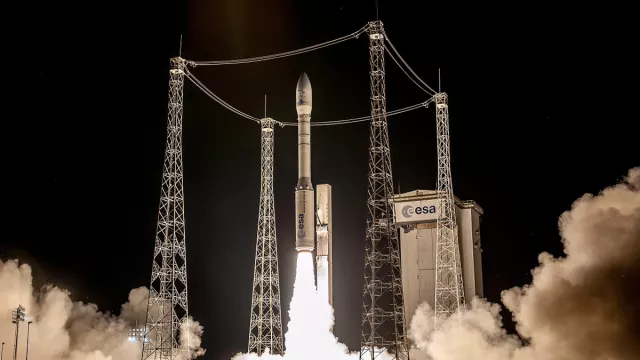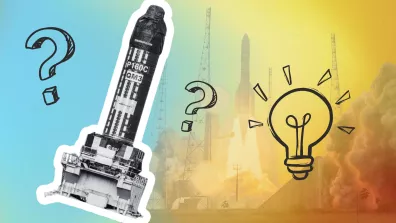In service since 2012, Europe’s lightest launcher, Vega, now offers a new variant, Vega-C (for Consolidated), with several enhancements to deliver more power and flexibility without increasing costs. It successfully made its maiden flight on 13 July 2022 from the original Vega launch pad at the Guiana Space Centre (CSG).
Key information
| Mission | Launch of small satellites to low Earth orbit |
|---|---|
| Domain | Space transportation |
| Launch date | Maiden flight 13 July 2022 |
| Partners | ESA, ASI |
| Where | Guiana Space Centre (CSG), ELA-1/ELV Low Earth, polar and Sun-synchronous orbit |
| Lifetime | Indefinite |
| Status | In operation |
Key figures
- 2 successful flights between 2022 and 2024
- 35 m high
- 3.3 tonnes lift capacity to low Earth orbit
- 2.2 tonnes lift capacity to polar low Earth orbit
Key milestones
- 25 July 2025 : Vega-C launches CO3D and MicroCarb satellites
- 29 April 2025 : Vega-C launch with the Biomass satellite
- December 5, 2024: Successful return to flight. Successful orbiting of Sentinel-1C satellite
- December 20, 2022: 2nd flight fails (payload: Pleiades Neo 5 and 6 observation satellites)
- 13 July 2022: Vega-C first flight carrying 7 satellites, microsatellites and nanosatellites
- December 2014: ESA gives go-ahead to develop Vega-C
Project in brief
In December 2014, the European Space Agency (ESA) gave the go-ahead to develop Vega-C, an upgraded version of its light launcher, with a budget of €395 million and Avio as project prime contractor (originally in a consortium with ASI, the Italian space agency). The objective is to give Vega-C a lift capacity exceeding 2.2 tonnes into polar orbit (700 kilometres), compared to 1.5 tonnes for Vega, to be able to launch larger satellites and in greater numbers to build and replenish constellations. ESA and its industry partners are seeking with Vega-C to cover the full spectrum of launch requirements for institutional and commercial Earth-observation satellites.
The biggest change is on Vega-C’s first stage, powered by the new P120C solid-rocket booster. The P120C delivers twice the thrust of its predecessor, the P80, but above all affords the significant production advantage of being common to the Ariane 6 launcher, which is powered by two or four P120Cs depending on mission requirements. Produced at a rate of several tens per year, the P120C thus streamlines costs for both programmes.
The other enhancements are on the Z-40 second stage, also powered by a solid-rocket booster and heavier than the Z-23, which it replaces, and on the AVUM+ storable-propellant upper stage, which has a lighter structure and more fuel capacity. Lastly, Vega-C’s fairing has also been enlarged from 2.6 metres to 3.3 metres in diameter.
Vega-C operates at the Guiana Space Centre from the same ELV (Ensemble de Lancement Vega) pad as its predecessor. The pad has been extended to allow both variants—Vega or Vega-C—to launch from the same facilities.
CNES’s role
As well as managing the infrastructures at the Guiana Space Centre and the downrange tracking stations, CNES was also involved in developing the P120C stage. In particular, it supervised the three ground firing tests of the P120C on the BEAP solid booster test stand at the base.
Contacts
Vega-C Project Leader
Fleur Lefèvre
E-mail: fleur.lefevre at cnes.fr
Vega-C Senior Project Leader
Eric Robert
E-mail: eric.robert at cnes.fr
Head of Space Transportation Strategy
Philippe Pujès
E-mail: philippe.pujes at cnes.fr



